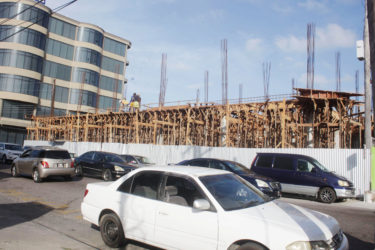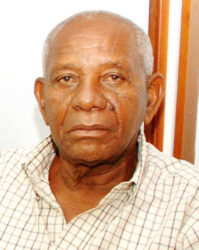There is evidence of both professional lawlessness and official indifference in matters of safety and health in the construction sector and both the government and the “community of contractors” have a responsibility to move to protect both the lives of workers and the reputation of the industry, Secretary of the General Contractors Association of Guyana (GCAG) Neil Cort-Rogers has said.

Cort-Rogers and GCAG Vice President Aubrey Jones spoke with Stabroek Business earlier this week following last Sunday’s electrocution of a construction worker at a Robb Street building site.
Jones said that while he had not visited the site since the accident, the evidence “based on what was reported in the newspapers,” suggests that it was “entirely avoidable.” He insisted that there is no way steel rods should have been passed from the ground to the roof in the vicinity of high tension wires without the necessary precautions being taken.

Alluding to what he said was “the frequency of serious construction site incidents,” Jones said one did not get the impression that the safety of workers featured highly on the scale of priorities of some contractors. “The evidence can be seen from what transpires on some construction sites,” Jones said.
According to Cort-Rogers, what is of equally serious concern is the fact that the agencies responsible for regulating what takes place on work sites are “inattentive” in the execution of their duties. “When you look at what goes on at workplaces you do not, in many instances, get the impression that contractors are guided or informed by regulations that have to do with workers’ safety,” Cort-Rogers said.
Both officials castigated the Ministry of Social Protection for what Cort-Rogers said was “an embarrassing professional indifference” to the need to pay attention to the welfare of workers in the construction sector. Jones said that there had been “a brief period” during late last year when it seemed that the Ministry of Social Protection was taking workplace safety more seriously. But “everything for some years now has

been pointing in the direction of the relevant agencies not seeming to care about the safety of workers on construction sites,” Cort-Rogers said.
Jones, meanwhile, said the association will shortly be writing to Public Infrastructure Minister David Patterson seeking a meeting with him to discuss “safety and other issues” in the construction sector.
Jones said that at that meeting the association will be suggesting to the minister that the various stakeholder groups including the Public Infrastructure Ministry, the Occupational Safety & Health Department of the Ministry of Social Protection and the association meet to discuss and implement measures to ensure that safety and health are placed high on the list of priorities in the construction sector.
And according to Rogers it was ironic that seeming indifference to safety and health in the construction sector coincided with a boom in the construction sector. “One would have thought that all of the stakeholders, particularly the contractors, would have raised their game at a time when the demands of construction jobs are becoming greater. We have reached a point where in the evaluation of tenders we have to pay at least as much attention to safety issues as we do to issues of professional competence,” Rogers said.
Established late last year, the GCAG had earlier this year, publicly voiced its concern over what it said were serious flaws in the construction of the D’Urban Park stadium where the flag-raising event to mark the country’s Jubilee Independence Anniversary was held. Shortly thereafter President David Granger reassigned the project to the Ministry of Public Infrastructure.
The association said part of its mission is to work towards the realization of an enhanced level of professionalism in the local construction sector and to lobby for “a broader spread of access to state tenders for contractors across the sector.”




